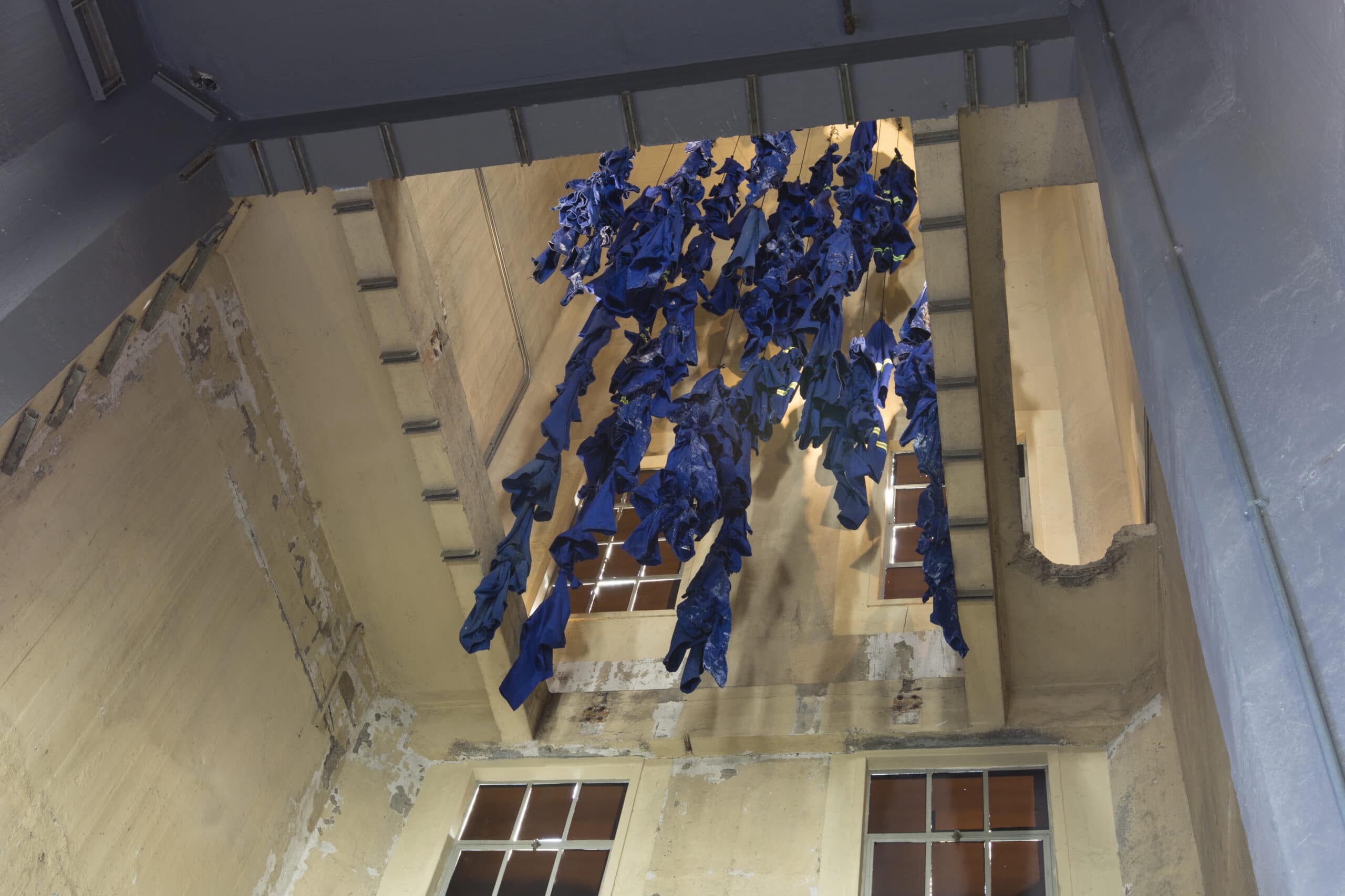2019
Royal blue two-piece Conti suit overalls with reflective tape on arms and legs, wheelbarrows and audio track
Dimensions variable
The history of migrant labour in South Africa is the legacy of Apartheid. Its effects are still part of contemporary society. Since the 1911 Mines and Work Act, the 1913 Native Land Act and the 1950 Group Areas Act, communities have been displaced and segregated based on racial discrimination. Many people were forced to leave their homes to become farmworkers or find work in urban environments as mineworkers due to inhumane and harsh economic conditions often left their families behind. Today, in democratic South Africa, there are laws that implement fair labour practice and protect worker's right. However, due to socioeconomic inequality, migration to find better work opportunities still exists. Workers skilled in construction, bricklaying, plastering, carpentry, plumbing and electrical work help to give form to our structures and shape our cities. Nobukho Nqaba‘s installation of blue overalls and wheelbarrows titled Umnqweno, meaning hope and aspiration is isiXhosa, expresses a vision for an egalitarian society where there is a celebration of the people whose hard work deserves public acknowledgement.

